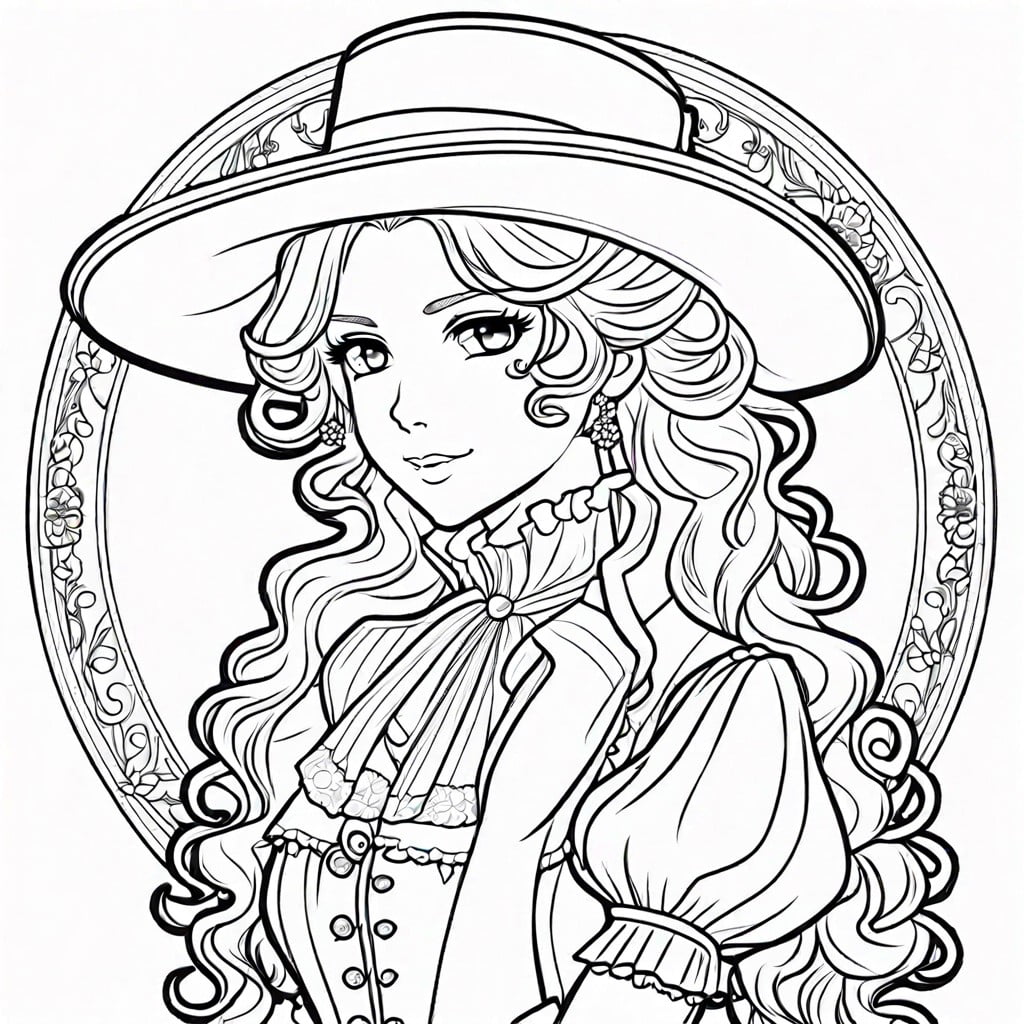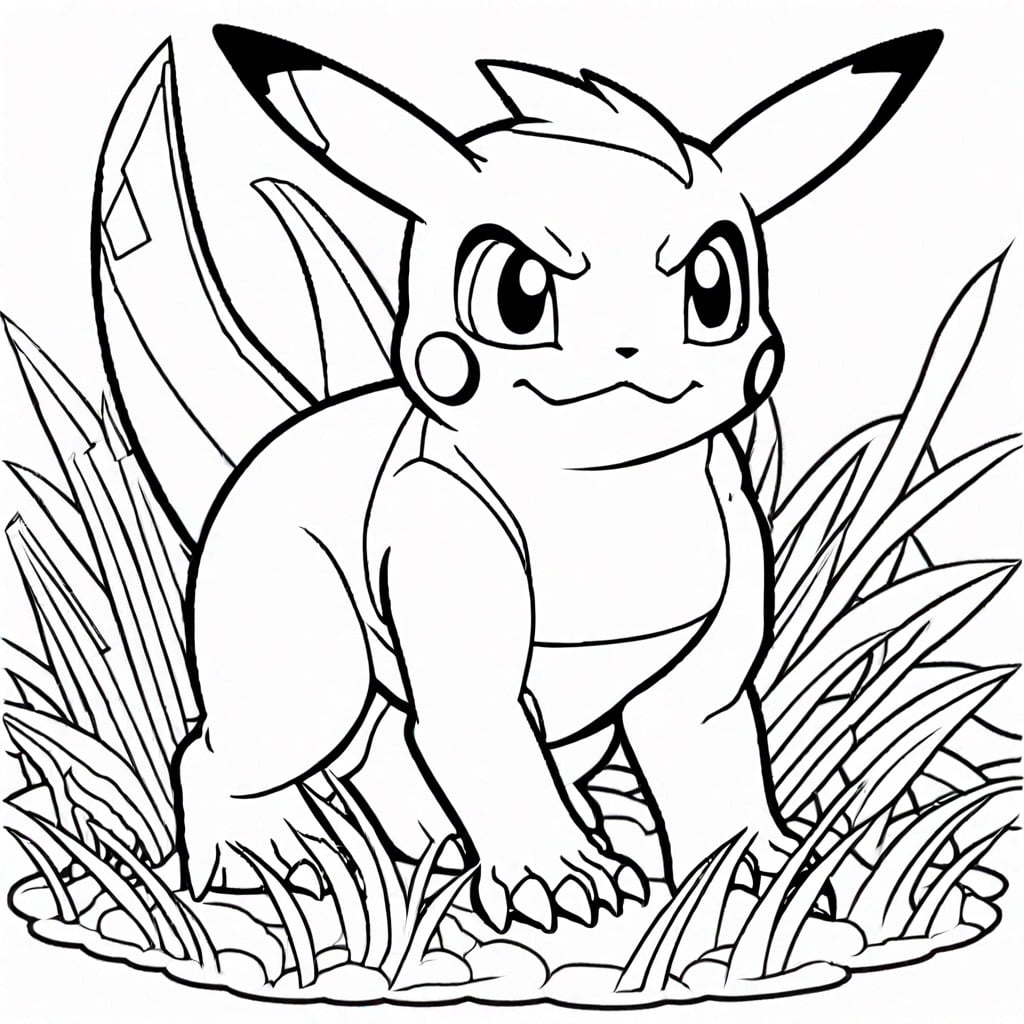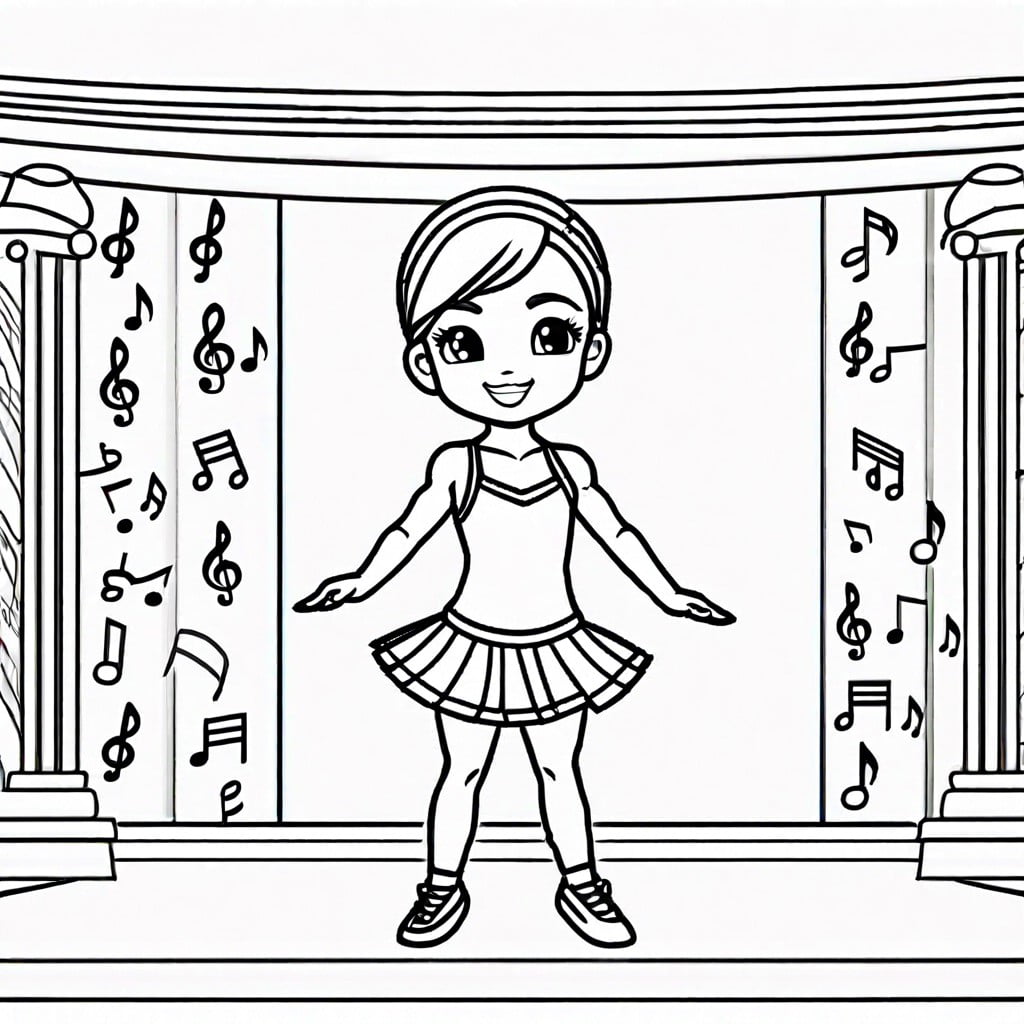Explore our collection of printable tabernacle coloring pages, because it’s an engaging way to learn Biblical stories while enhancing your creativity.
Ready to embark on a creative journey through the world of printable tabernacle coloring pages? While numerous ideas have been circulating on the internet, we’re going to raise the bar with some fresh, unique concepts guaranteed to add a splash of color to this sacred spectacle.
Our mission is to provide you with a well-curated, inspiring list that you’ll find both enlightening and engaging. Rest assured, we will also enrich this expedition with the best resources tied to the existing ideas right at the end of the article.
So, let’s delve in and turn this canvas into a vibrant testament of creativity.
Moses Building the Tabernacle

Visualize the scene where Moses receives the instructions from God on Mount Sinai, a moment of divine inspiration and reverence. Children can grasp the importance of following directions and the value of sacred spaces as they add color to the elements that Moses is instructed to include – the precisely measured curtains, frames, and the layering of the roof coverings.
Highlight the cooperative effort involved, illustrating how the Israelites came together, contributing materials and craftsmanship to this special structure. Emphasize the significance of obedience and communal worship through the depiction of this biblical construction.
Holy of Holies in the Tabernacle

Venture into the most sacred space where only the High Priest could enter once a year on the Day of Atonement. Capture the solemnity of this inner sanctuary with a detailed coloring page featuring the thick veil, embroidered with cherubs, that separated it from the rest of the Tabernacle.
Illustrate the shimmering presence of the Shekinah glory that resided above the golden Ark of the Covenant, representing God’s throne on earth. Add intricate patterns to the two cherubim that were stationed atop the mercy seat where the High Priest sprinkled the blood of the sacrificial animal.
Remember to use colors thoughtfully to convey the grandeur and reverence of this hallowed chamber.
High Priest in the Tabernacle

Immerse in the sacred role as you color the High Priest adorned in his ceremonial vestments. Each detail on the page reflects a rich tradition:
- The ephod with its precious stones represents the twelve tribes of Israel.
- The Urim and Thummim, mysterious objects used for divine decision-making, are hidden beneath the breastplate.
- The turban, bearing the inscription “Holy to the Lord,” signifies devotion and sanctity.
- Tassels, bells, and pomegranates on the hem of the robe echo with every step, serving as a reminder of the priest’s purity and his duty to serve God’s will.
Encounter a moment of biblical history as you bring these vibrant traditions to life through your creative touch.
Ark of the Covenant
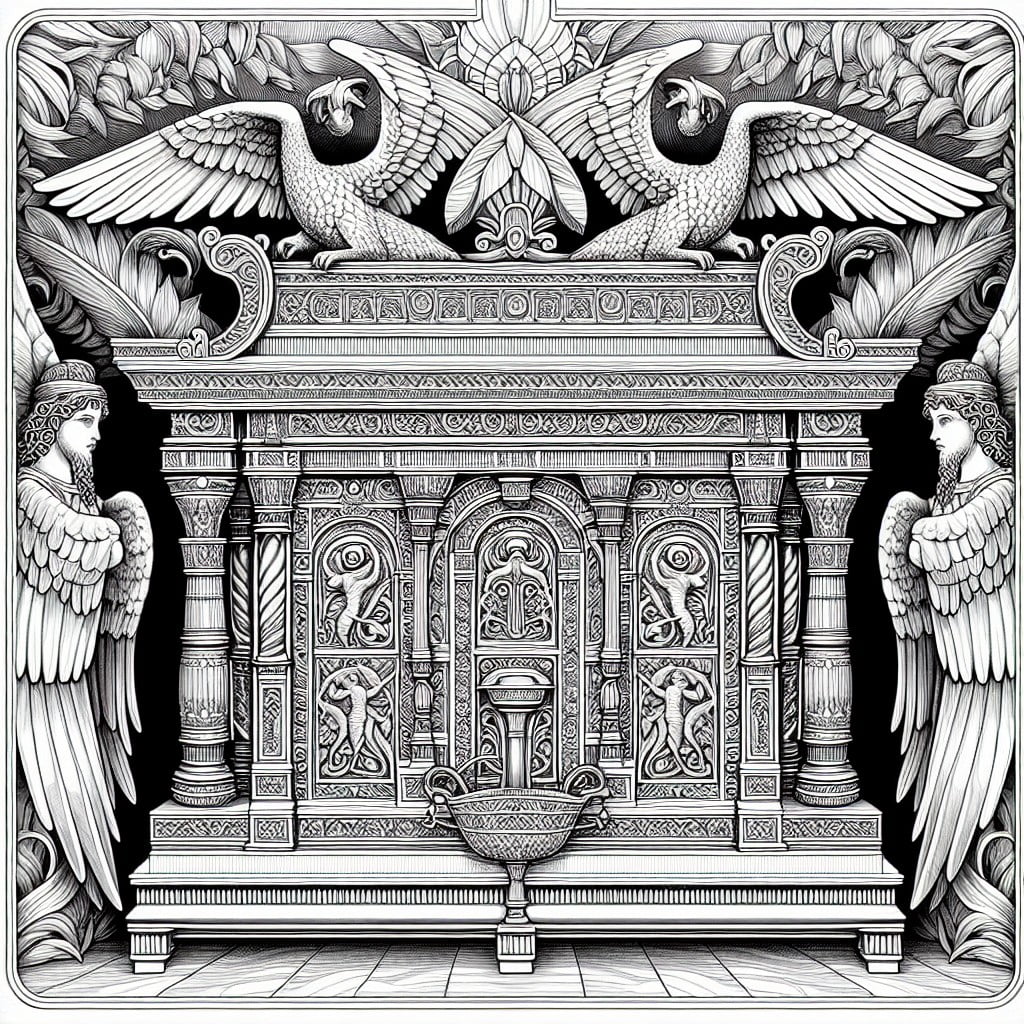
This sacred chest represents where God’s presence dwelled with the Israelites. When creating your masterpiece:
- Capture the two gold cherubim with their wings outstretched atop the gold cover.
- Pay attention to detail, ensuring to color the acacia wood box overlaid with gold, conveying its richness.
- Consider the storied contents: the two stone tablets of the Ten Commandments, Aaron’s rod, and a pot of manna, signifying the covenant and miracles God performed.
- Use bold colors to depict the carrying poles, stressing the Ark’s mobility and its central role during the Israelites’ travels.
- Lastly, the reverent atmosphere surrounding the Ark can be portrayed with soft hues and rays of light to emphasize its sanctity and importance.
Altar of Burnt Offering

Capture the intricate details and importance of this sacred site with your coloring. This altar, made of acacia wood and overlaid with bronze, stood proudly at the entrance to the Tabernacle, symbolizing sacrifice and atonement.
Illustrate the fire upon the altar and the smoke rising towards the heavens, reflecting the Israelites’ offerings to God. Depict the ornate horns at each of its four corners, which were touched with the blood of sacrifices, as an expression of sanctification and dedication.
Through your artistry, bring to life the bustling activity of priests attending to their duties, conveying a sense of reverence and awe.
Table of Shewbread Within Tabernacle

Delve into the significance of the Table of Shewbread as a representation of fellowship and provision. Highlight the design elements to be colored: the table itself, the twelve loaves of bread, and the accompanying vessels for drink offerings.
Explore the symbolism behind the number twelve, reflecting the tribes of Israel. Encourage attention to detail in coloring the intricate patterns and woodworking of the table, suggesting the use of rich, golden hues contrasted with the natural tones of the bread.
Emphasize the placement of the table on the north side of the Holy Place, inviting those coloring to creatively visualize its sacred arrangement.
Candlestick in Holy Place
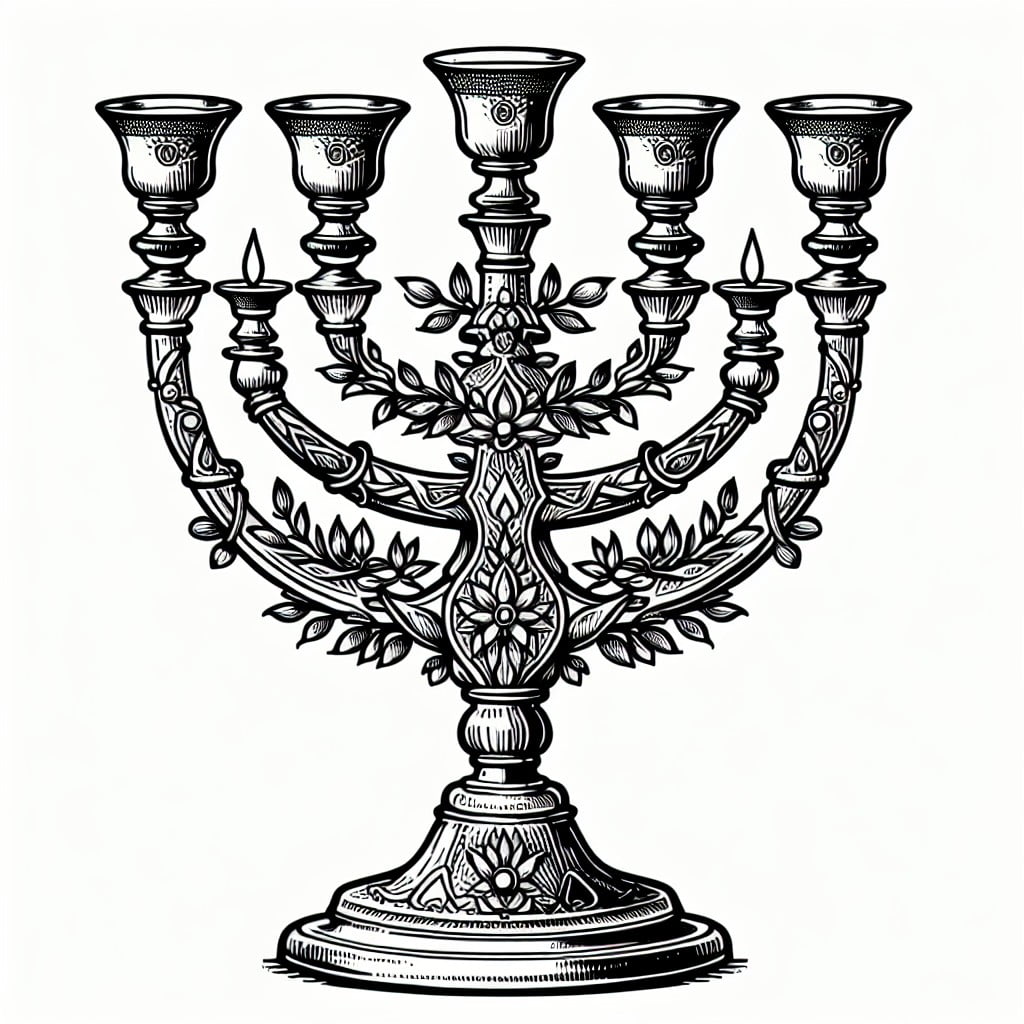
Explore the artistic depictions of the seven-branched golden menorah, an integral feature of the Holy Place which provided light by burning pure olive oil.
Delve into the intricacies of its almond blossom design, reflecting beauty and divine wisdom.
Understand the significance of the candlestick’s purpose: casting light on the bread of the Presence, symbolizing enlightenment and guidance from God.
Consider the importance of precision in the portrayal of this artifact, as it served as an enduring reminder of the Israelites’ connection to their Creator while they journeyed through the wilderness.
Tabernacle Sacred Utensils

Delve into the fascinating details of the sacred utensils with a coloring page that highlights items such as the golden lampstand, incense altar, and ceremonial shovels. Reflect on their symbolic meanings while coloring – the lampstand representing God’s light, the incense altar for prayers, and the shovels for the removal of ash, signifying purification.
These tools remind us of the rituals and reverence in the Tabernacle’s daily operations. Enjoy adding color to the intricate designs that these sacred objects boast, bringing ancient worship practices to life on your page.
Setting Up of the Tabernacle

Visualize the scene of the Israelites assembling the Tabernacle under Moses’ direction. Picture the tribes gathered, contributing to the community’s sacred space.
– Each tribe plays a role, signifying unity and cooperation.
– Depict Levites handling the sacred objects, conveying reverence and carefulness.
– Illustrate the raising of the Tabernacle’s fabric walls, representing protection and God’s presence.
– Add colors to the pillars and bases, symbolizing strength and stability.
– Show the precise arrangement of the courtyard, reflecting order and divine instruction.
Capture these elements to create a dynamic and educational coloring page that not only entertains but also teaches the significance of the Tabernacle’s construction.
An Overview of the Tabernacle Layout
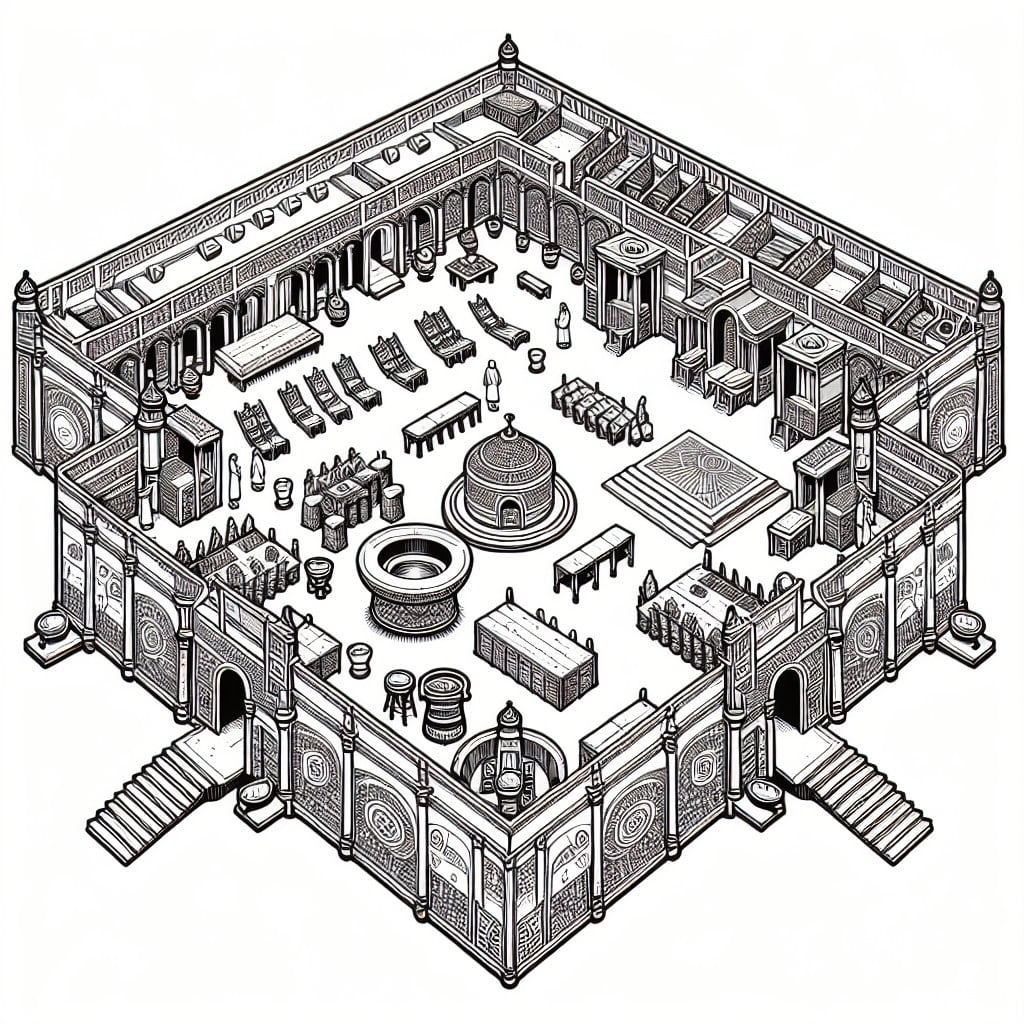
Explore the overall design of the ancient sanctuary, structured in three main areas: the Outer Court, Holy Place, and Most Holy Place. Each zone, progressively more sacred, requires different coloring techniques to highlight their distinctiveness:
- Outer Court: Shade this bustling area lightly to denote the sunlight illuminating the bronze altar and laver where priests prepared sacrifices and cleansed themselves.
- Holy Place: Use medium tones for the enclosed space housing the golden lampstand, table of shewbread, and incense altar, representing a gradient of holiness.
- Most Holy Place: Employ rich, dark colors to signify the divine presence above the mercy seat of the Ark of the Covenant, shrouded in mystery and reverence.
Through shading contrasts, the drawing will visually communicate the transition from the ordinary to the divine within the tabernacle’s layout.

